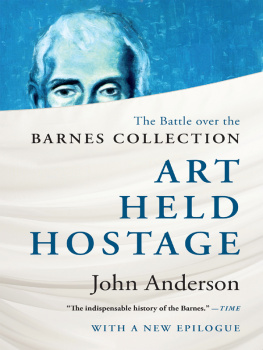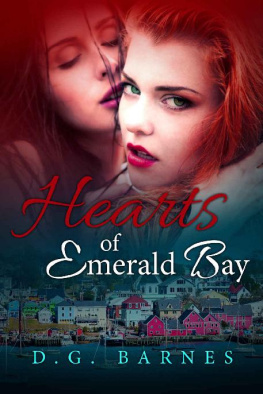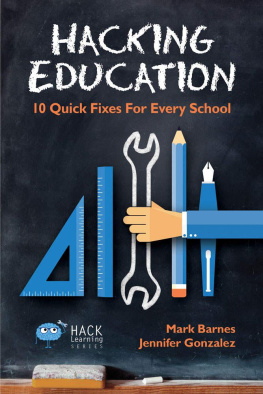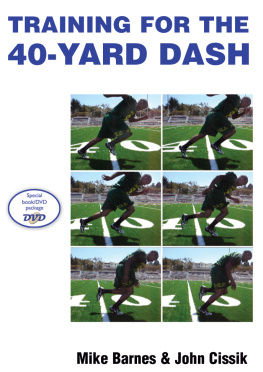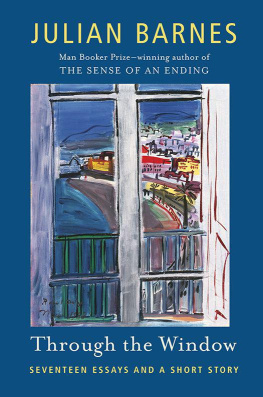

Copyright 2013, 2003 by John Anderson
All rights reserved
Printed in the United States of America
First published as a Norton paperback 2013
For information about permission to reproduce selections from this book,
write to Permissions, W. W. Norton & Company, Inc., 500 Fifth Avenue,
New York, NY 10110
Manufacturing by Courier Westford
Book design by Dana Sloan
Production manager: Julia Druskin
The Library of Congress has cataloged the hardcover edition as follows:
Anderson, John.
Art held hostage : the story of the Barnes collection / John Anderson.1st ed.
p. cm.
ISBN 0-393-04889-6 (hardcover)
1. Barnes FoundationManagement. 2. ArtPrivate collectionsPennsylvaniaMerion. 3. Barnes, Albert C. (Albert Coombs), 18721951. 4. Glanton, Richard. I. Title.
N5220.B28 A53 2003
ISBN 978-0-393-34731-9 pbk.
ISBN 978-0-393-34938-2 (e-book)
W. W. Norton & Company, Inc.
500 Fifth Avenue, New York, N.Y. 10110
www.wwnorton.com
W. W. Norton & Company Ltd.
Castle House, 75/76 Wells Street, London W1T 3QT
For Hilary
CONTENTS

Images in this ebook are not displayed owing to permissions issues.

I n the course of researching and writing this book, I have built up many debts. I would like to acknowledge my appreciation to all those who helped in the making of Art Held Hostage.
From the beginning, I was greatly aided by the fact that the principal actors in the more recent aspects of this drama gave generously of their time and opinions. I wish to thank the following, in particular, for their cooperation: Richard H. Glanton, Niara Sudarkasa, Eugene L. Cliett, Jr., Cuyler Walker, Carl Singley, Paul Diamond, and Kimberly Camp.
Numerous others in the story shared their insightssometimes in brief, but often at lengthwith me, and I thank them as well: William R. Adams, Anne Barnard, Richard L. Bazelon, Julia Bond (Mrs. Horace Mann Bond), Julian Bond, Christopher Booth, Earle Bradford, David Bright, William H. Brown III, Larry Cesare, Larry Ceisler, David Cohen, Mark Cohen, Murray Dickman, Richard Feigen, Loren Feldman, Lucinda Fleeson, Kathleen Frederick, Richard Goldberg, Antonio Guizzetti, Roosevelt Hairston, Jr., Ron Javers, Gregory B. Jordan, Eliot Kaplan, Hilton Kramer, Matthew D. Lee, Laura Linton, James Lopresti, E. Roger Mandle, William Marimow, David Marston, Richard McElroy, Jonathan Neumann, Mary Ann Nolan, Michael Pakenham, Lewis Piccini, Joseph Rishel, David W. Rawson, Paul Rosen, Stephan Salisbury, Robert Montgomery Scott, Michael Smerconish, Peter Smith, Richard Spiegelman, Michael Stiles, Sidney Steinberg, Robert J. Sugarman, Robert Ferris Thompson, Nicholas Tinari, Jr., Joe H. Tucker, Jr., Gary Tuma, John Unkovic, Frederick Voigt, Lois Wark, Bob Warner, Bernard Watson, Richard J. Wattenmaker, Shirley B. Williams (Mrs. Franklin Williams), and Ethel P. Wistar.
Some of my best sources wished to remain anonymous or virtually anonymous, and I have honored their desires. I think it is fair to say, however, that among them are Lincoln trustees; members of the Philadelphia legal, educational, and philanthropic communities; and high-ranking state and federal officials.
I am especially indebted for their help to Kimberly Camp, the current CEO and executive director of the Barnes Foundation, and her colleague Andrew Stewart.
For their advice and insights on various matters, I would like to thank the following: Catherine Aman, Michael Apstein, M.D., Eric Asimov, Camelia Cassin, Margaret Daisley, Thomas Daly, Joan Ferrell, Jon Gertner, Ronald C. Gordon, Jr., Karen Hall, Martha Hevenor, Ashby Jones, Andrew Longstreth, Judy Lopatin, Douglas McCollam, David Marcus, Fleming Meeks, John Morris, Mark Obbie, Elisabeth Preis, Todd J. Schwartz, Amy Singer, Morris Stubbs, Kevin Pierce Thornton, Nicholas Varchaver, Mark Voorhees, Rob Walker, and Phil Waller.
Professors David Musto and John Warner, at Yale University, and professor James Havey Young, of Emory University, kindly shared their vast knowledge of the history of science and medicine with me. Mary Ellen Bowden, of the Chemical Heritage Foundation in Philadelphia, and Edward Mormon, of the Library of the College of Physicians, also in Philadelphia, were also most helpful in this regard. Evan Towle, of the Urban Archives of the Temple University Libraries, and Diane Worrell, of the Special Collections, Morris Library, Southern Illinois University at Carbondale, were both of great assistance in the photographic research for this book.
Readers will notice that there are no source notes. As I point out in the introduction, Art Held Hostage is neither a scholarly biography nor a work of art history. It is journalism. I do, however, wish to note my obligation to a number of earlier works about Dr. Barnes and the Barnes Foundation. These include: Henry Hart, Dr. Barnes of Merion: An Appreciation; William Schack, Art and Argyrol: The Life and Career of Dr. Albert C. Barnes; Gilbert M. Cantor, The Barnes Foundation: Reality vs. Myth; and Howard Greenfeld, The Devil and Dr. Barnes: Portrait of an American Art Collector. More interesting, by far, however, is the essay on Barnes in John Lukacss stimulating book, Philadelphia Patricians and Philistines, 19001950. Also highly recommended is Richard J. Wattenmakers splendid short essay, Dr. Albert C. Barnes and the Barnes Foundation, which can be found in Great French Paintings from the Barnes Foundation: Impressionist, Post-Impressionist, and Early Modern.
Others who read and commented on portions of the book in manuscript include: my old teacher and mentor, Howard Roberts Lamar, retired Sterling Professor of History and former President of Yale University; David J. Garrow, Presidential Distinguished Professor of Law at the Emory University Law School; Professor Kevin Van Anglen of the Boston University Department of English; Lois and Tom Wark, retired editors at the Philadelphia Inquirer (Lois helped edit the Girard Trust series that plays such a prominent role in chapter twelve); and my old friend Lawrence Walsh, also of Philadelphia. Lawrence and Mary Williams Walsh not only hosted the author on a number of his visits, they also gave him good counsel and encouragement.
Colleagues in the magazine and newspaper world who read and commented on all or part of the manuscriptand gave invaluable adviceinclude R. W. Apple, Jr., Geoffrey Precourt, Craig Unger, Loren Feldman, Jon Rizzi, and Robert Friedman. I thank them all.
At The American Lawyer, editor-in-chief Aric Press encouraged me to pursue the Barnes story, then gave me the time I needed to report it. I am grateful for that. Senior writer Allison Frankel read and commented on the manuscript; and I particularly thank managing editor Dianne McDonald, whose infectious enthusiasm for this project was much appreciated by the author. (Dianne, theres not a writer alive who doesnt need a fan; and you were a great one to have.) Two other people at The American Lawyer deserve applause: executive assistant Eileen Vella, for her good care and keeping; and Corporate Counsel executive editor Anthony Paonita, who helped rescue me from all sorts of pitfalls.
Next page
